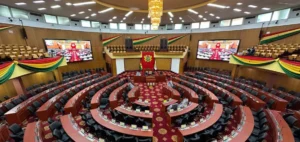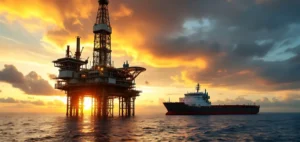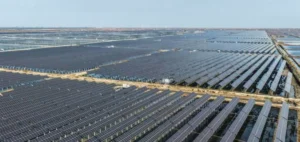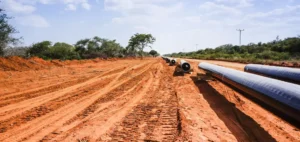With its four huge white chimneys, the Battersea power station has dominated the London skyline for decades.
It has been closed for almost 40 years and is about to be given a new life, transformed into a luxurious complex of offices, housing, restaurants and stores.
Located south of the Thames, the rehabilitation of the power station built in the 1930s is the latest example of projects to transform former industrial sites in the British capital.
Begun in July 2013, the work that will have cost 9 billion pounds (about 10.2 billion euros) has ended and the site opens Friday to the public.
Its 16 hectares are now home to more than 250 stores, cafés and restaurants, more than 270,000 m2 of commercial space as well as apartments, a theater, a hotel, an event space and 24 hectares of gardens.
In total, the project’s designers estimate that 25,000 people will live or work on the site, the result of “the most meticulous restoration project of a post-industrial building in London,” according to Ben Walker of LDA Design, which contributed to it.
It has become a cult image since Pink Floyd used it as the cover of their 1977 album Animals, but the plant had previously been the subject of much criticism. At the beginning of its construction, the stability of its chimneys had been questioned, and some skeptics had called it “gigantic and unnecessarily ugly”.
At its peak, the plant produced one-fifth of the electricity consumed in London, supplying Buckingham Palace and Parliament.
But by the 1970s, its usefulness had diminished with the rise of new sources of power generation in the Thames Estuary. A first unit of the plant was shut down in 1975, and the second in 1983.
Several aborted projects had then tried to rehabilitate the building, which gradually lost its roof and fell into ruin. Until its takeover in 2012 by a consortium of Malaysian investors.
The architects faced many challenges in transforming the plant, including meeting the vision of architect Giles Gilbert Scott, who played a major role in its construction, by creating “huge new spaces.”
– Art deco jewelry –
After spewing smoke for half a century, the four 8.4 meter diameter chimneys had suffered from corrosion and had to be dismantled before being rebuilt identically.
From now on, visitors will be able to climb to the top of one of them via a glass elevator to enjoy a panoramic view of London.
Other elements of the original building have been preserved, such as the space that housed the turbine of the first power plant unit, an Art Deco jewel.
Another trace of the site’s past: the 133-meter long wharf that was used to load coal from the river is now lined with stores and restaurants.
The Battersea power station is the latest in a long list of industrial sites to be refurbished in the British capital.
Another London power station, Bankside, also designed by Giles Gilbert Scott, has housed the Tate Modern, London’s museum of modern art, since 2000.
For Tom Goodaal, a partner at Related Argent who specializes in urban renewal and who has worked on the redevelopment of King’s Cross Station in London, Battersea will be very attractive because it is an example of “the happy mix of old and new.
But its long-term success will come from the “magic” that can happen in the way the public takes possession of its spaces.
“It will be the ability of people to wander between the buildings and enjoy them without needing to belong to a particular club that will give it its true value,” he adds.






















